Sveti Ivan’s Fortress Watches Over Kotor
The coastal town of Kotor is a UNESCO world heritage site. Undoubtedly, it deserves the designation because of the majestic rugged mountains towering all around it with a ribbon of blue water that somehow finds its way from the ocean to the edge of the city. Another famous landmark of the city is the Sveti Ivan’s Fortress (also known as St. John’s) that towers overhead carved into and at other places jutting out of the mountain. This Kotor fortress is a prominent feature of the present landscape and the story of Montenegro through history.
Signage at the back of old town Kotor points you to the routes that lead up to the fortress. If you don’t see signage, don’t venture up. It may feel like you are headed to the right place, but you are most likely going to encounter an impasse. I’m not just guessing on this one. (smile)
1350 steps rise incrementally on the well-inclined switchback paths. Prepare for it. Strap on your tennis or hiking shoes for this hike. The path is not an ideal place for heels or flip flops. The steps are plenty wide for one person to travel but a bit tight for two. When encountering others, someone will need to walk on the rocks. They are fairly stable, but do make for a rougher go for those trying to conserve energy.
Along the way, there are a number of stopping p0ints all of which have good photo opportunities. There is no shame in going up partway to take pictures, but the fortress itself and best views are to be had from the top. Be sure to take some water with you. You may need it before you’re done.
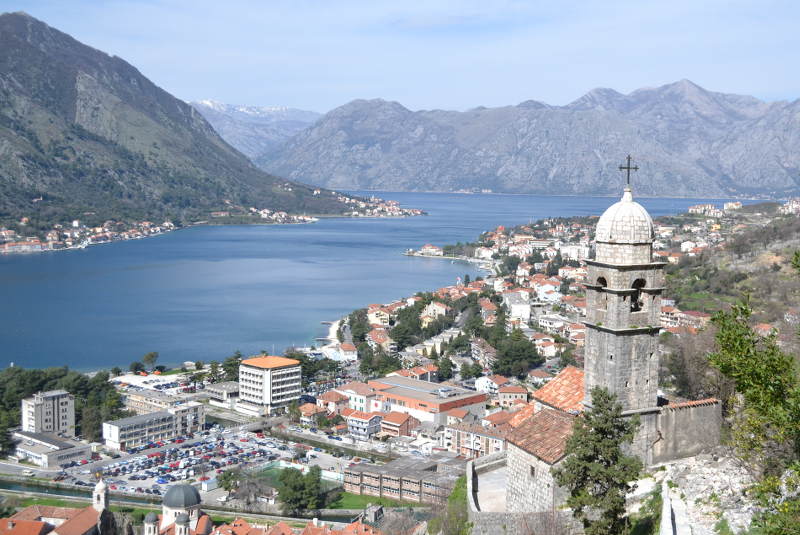
Almost halfway up St. John’s Mountain you encounter the votive church, Our Lady of Health. Built in response to a number of plagues in the mid-15th century, this building in the foreground with the mountains and Bay of Kotor in the background provides the most iconic shot of the area.
For centuries past and through today, this is prime real estate. Both a highly defensible and extremely desirable location in the Mediterranean, armies have been fighting for this area as far back as the Illyrium era in the 4th century. Today’s look begins to take shape in the latter 1400’s with the Venetians and Ottoman Turks taking turns defending the opposite sides a few times. The Austrians were the last to man the fortress as a defense position after their defeat in World War 1. Other world stage events here include the Axis Forces taking control of the area during World War 2.
At flag level of the Kotor fortress, you are also even with the peaks across the fjord. This provides great photo opportunities in a place where the light and colors change quickly because of the tall mountains altering the sun’s lighting in the Bay of Kotor.
The Sveti Ivan’s Fortress is more about a wall of protection than a place of safety. Naval vessels have a first shot at marauding armies sailing in, then on land, the city gates and walls are another first line of defense. The Kotor fortress is a shield to protect from having advancing forces move further inland. (This line was breached by a number of forces.) The third line of defense is Mount Lovćen close by. The natural mountain barriers make advancing past that point difficult along with any human resistance. Lovćen defense remains unconquered by outside forces to this day, a fact that continues to be a proud point for the Montenegrin people.
The wall of the fortress is free-standing until it tucks naturally into the mountain. Cut from the surrounding rock and masterfully built, it looks like it has been here since the beginning of time–like it is part of the mountain.
Making your way out to the wall for a shot downward can be a bit treacherous, but the views are superb.
Every self-respecting fortress needs a dungeon. Check.
On the south side of the city, the fortress has a different and still more vertical view. Hard core hikers and alpine climbers take notice. Have fun storming the castle!
As you reach the wall, there is a spot on the north side that allows passage through to the other side. This is the other side of the secret passage. Thanks to our friends from the local Captain Angel Hiking Club for marking the window as a waypoint. On the other side you can see a more level terrain for the defenders to hold their position. Also, there is a small Catholic church and remains of quarters where families and possibly fortress defenders lived.
This small Catholic church is more than 1,000 years old. It is maintained by a local gentleman named Francis. He took a small inheritance and bought this land behind the fortress to maintain and protect it so people could see the heritage and history of the area. A gracious fellow he is open for a chat and happy to take a picture if he can do it with his shovel in his hand. He values work highly.
The Kotor fortress and church on the side of the mountain are beautiful looking up or looking down from above at the Bay of Kotor and surrounding mountains. Enjoy it as a hike, go partway for some great pictures, or enjoy the whole thing from below.
CastleskotorMontenegro3 comments
Leave a Reply Cancel reply
You must be logged in to post a comment.
This site uses Akismet to reduce spam. Learn how your comment data is processed.


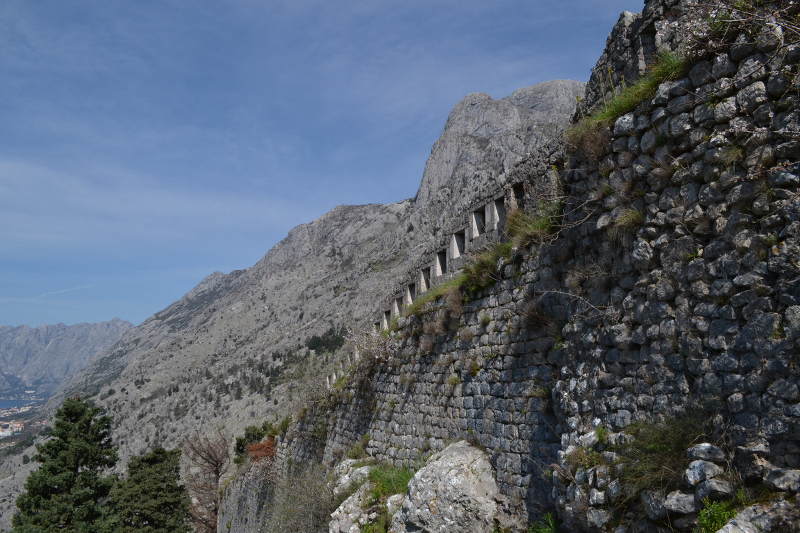
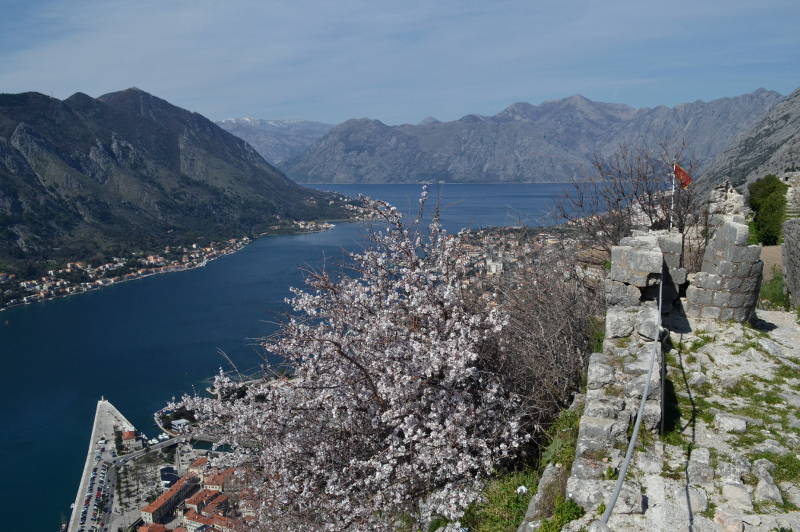
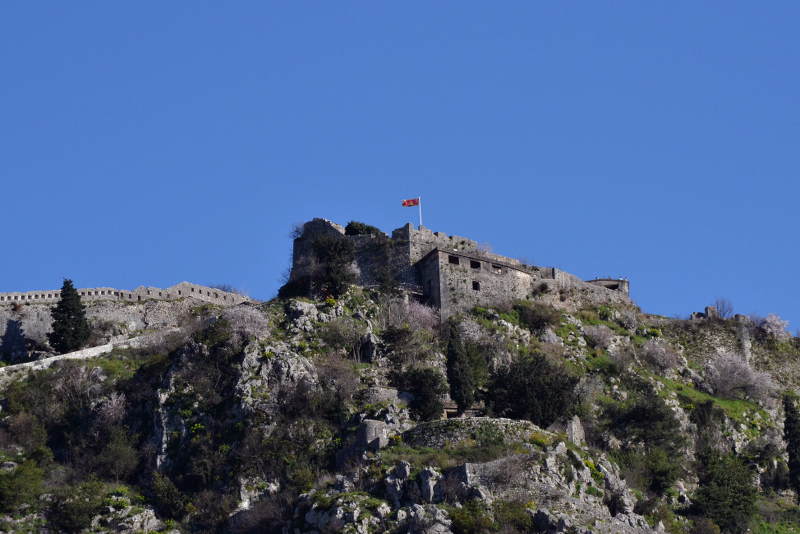
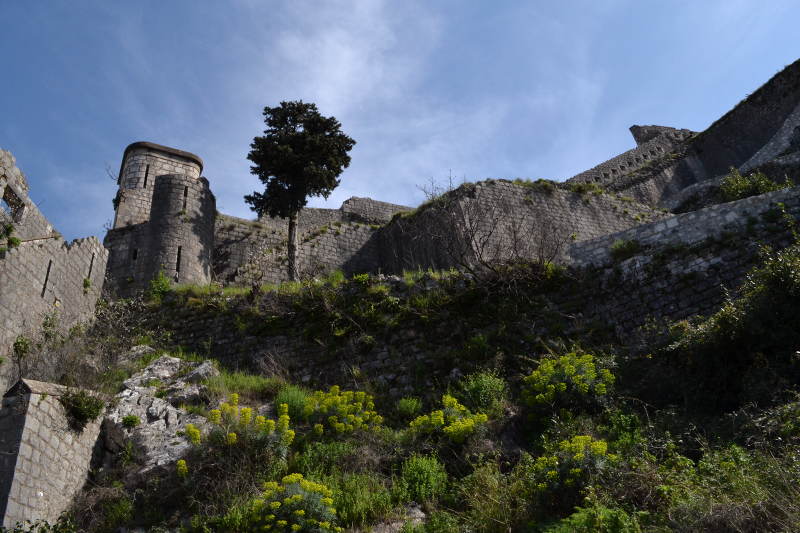
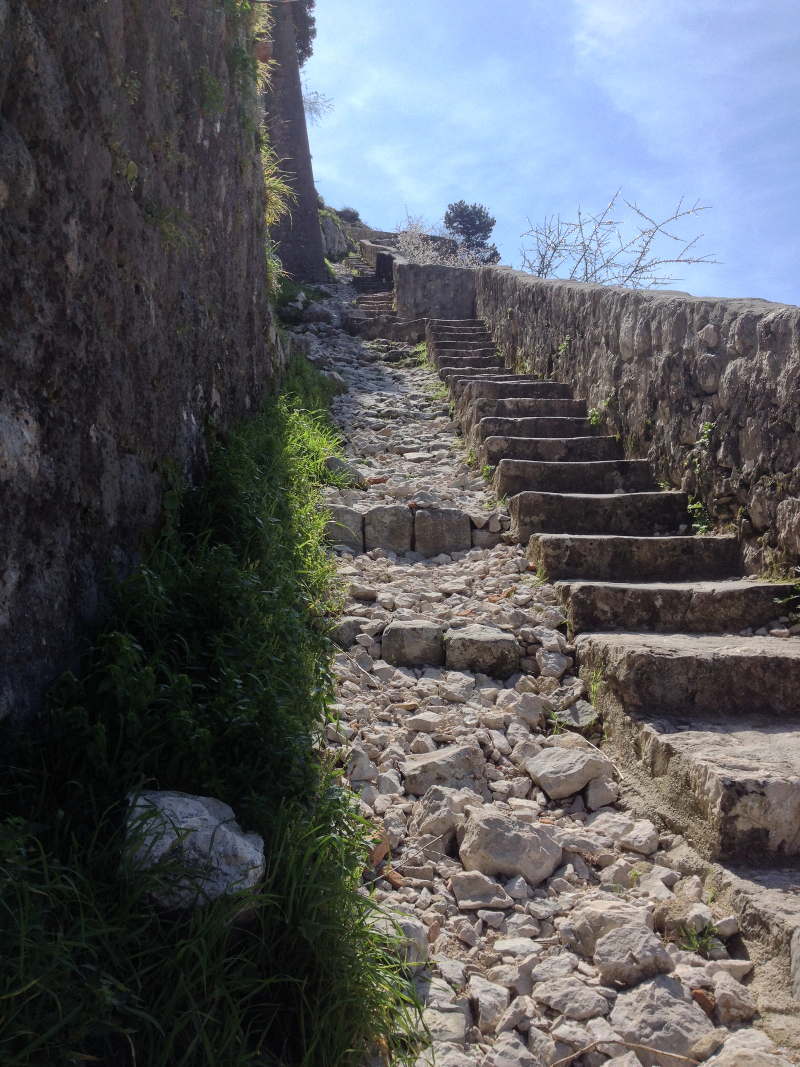


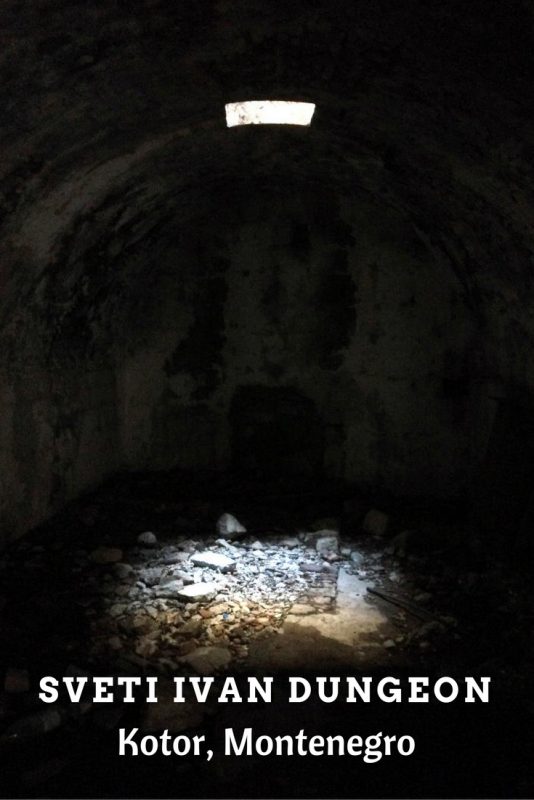
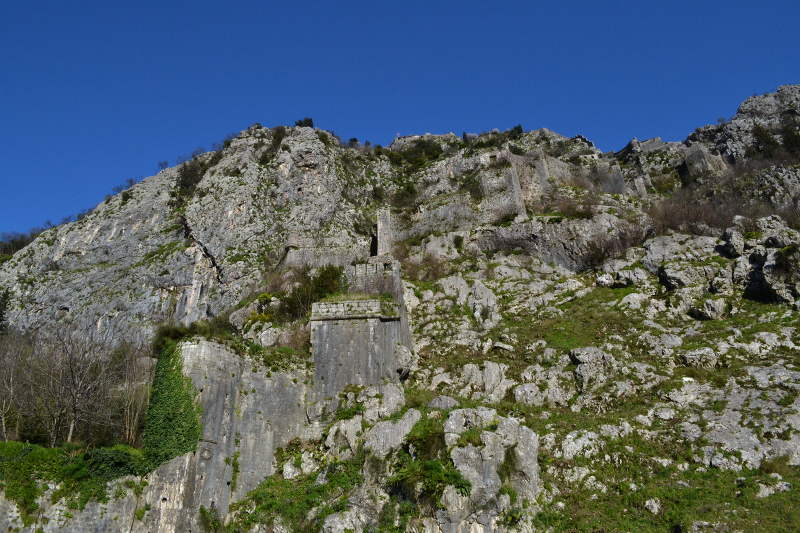

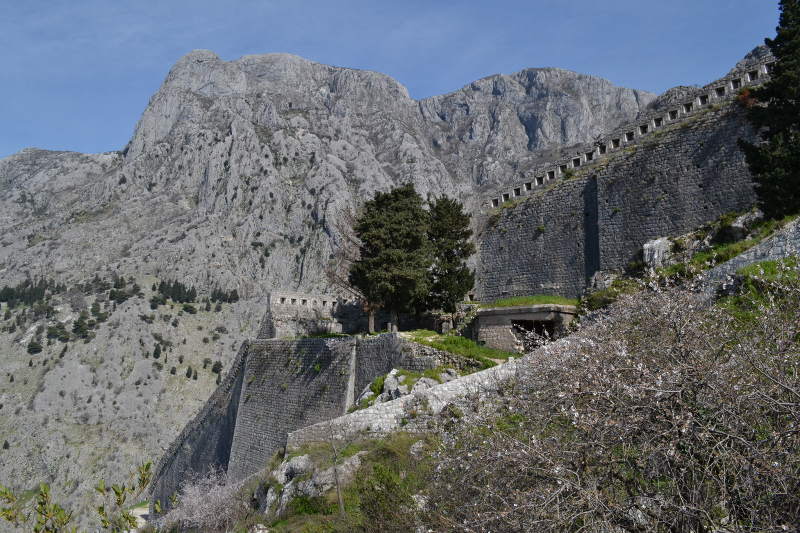
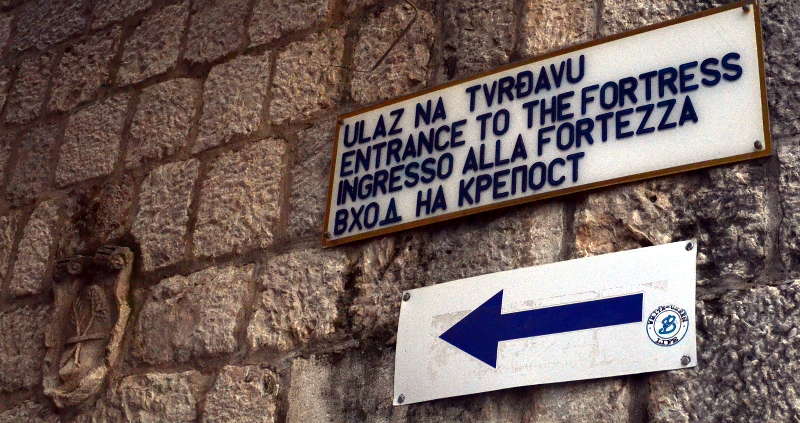


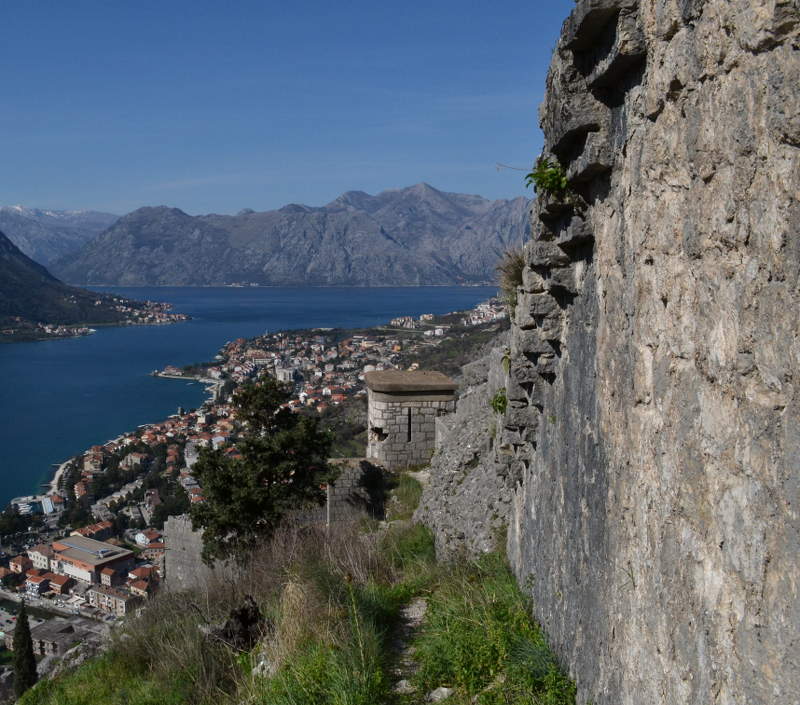
















Argh. Now I wish I’d sucked it up and climbed up to see the fort while we were in Kotor. Next time!
Jeff – it’s not really that big of a deal unless you like gorgeous, quiet views and unbelievable picture spots. OK, probably a good idea to climb to the top of St. John’s Fortress next time.
Recently I trekked to the top with my wife and two good friends. Along the way we met another traveler and blogger, Chelsea Fuss of http://www.frolic-blog.com (check out her stuff, it will inspire you). At the top we ducked through the window to explore a bit on the backside of the fortress. One of our crew saw a sign offering pršut and cheese. Though it was late in the day we decided to give it a try. Good choice for sure. We met the very gracious Perović family. They shared their table and served our little band of travelers their own dry-cured ham, cheese, home-baked bread, rakija (grape brandy on offer here), and pomegranate juice.
Plan to do this to taste the local flavors and experience the culture. To give you an idea on cost, for a vacuum sealed pack of pršut, a large block of homemade cheese, three shots of rakija, all the bread we could eat and juices all around, it cost 25 euros. Of course the experience and time together with friends old and new was perfect.
If you do go, you’ll find the daughter Jelena to be super helpful in translating for her family. If she happens to be in school, go anyway and deal with language difficulties. It will be worth the experience and it will help their family make it as they continue to live life on the coast as it was done traditionally.